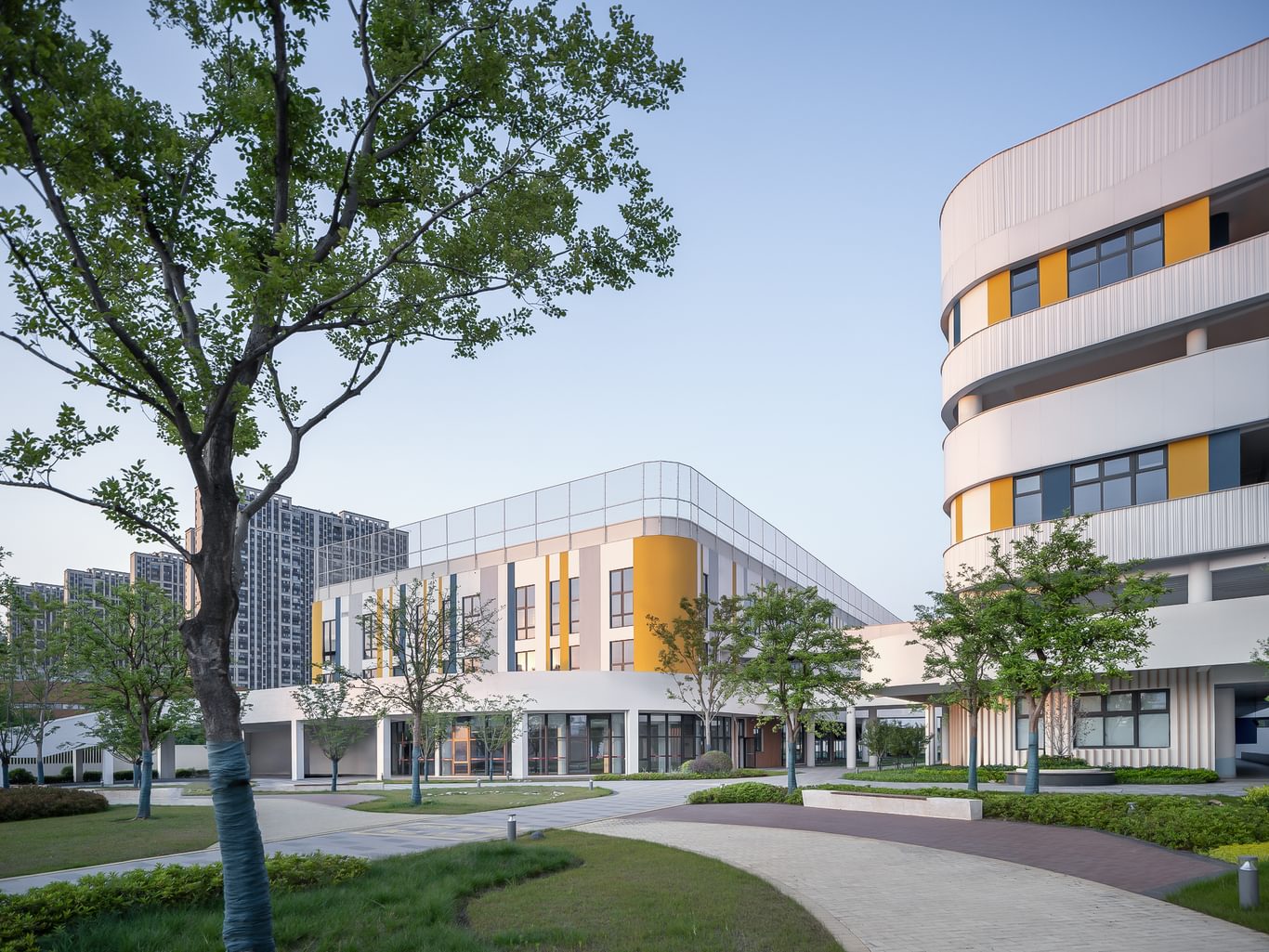
New photos of recently completed Chengdong Elementary School in Wuxi, China
Chapman Taylor won a design competition to create a nature-inspired new school at the Wuxi Economic Development Zone in China’s Jiangsu Province. The design was a joint venture between our Shanghai and Bangkok studios.
Chengdong Elementary School is a non-profit school on a 5.45-hectare site located in the heart of the Economic Development Zone. Our design for the school puts nature at the heart of the new development, blending the architecture with the natural surroundings to encourage a sense of calm and comfort and aiding the children’s performance.
The 61,000m2 GBA scheme includes teaching buildings, a gym, multifunctional buildings, administrative buildings, lecture halls, canteens, sports venues, a common area, a playground, a library, indoor green seating, an interactive space, outdoor learning areas and related support facilities. The complex is designed to hold about 150 faculty members and between 36 and 60 classes.
The architectural design language draws inspiration from the local context, such as the Huishan clay figurines, the vibrant foliage of the trees, the Scholar’s Rock formation and the dynamic surface movement of Lake Taihu. An expression of native elements in the modern architectural form creates a smooth transition between the buildings and the landscape. The refined architectural style evokes the essence of Wuxi and its architectural heritage through its accent colours, perforated façade pattern and curved lines.
Four fundamental elements informed the design concept:
- Digital learning capability
- Biophilic design for a calm and peaceful environment
- The use of vibrant colours to brighten up the spaces and improve learning experiences
- Embracing diversity and fostering a culturally responsive approach to teaching
The biophilic elements include a stepped green landscape, a timber louvre for the façade, timber-framed doors and windows, a covered walkway with curved edges, a semi-underground green area, an internal pocket garden and a green roof. The design uses curved edges, natural materials and natural light throughout the buildings, particularly the atrium area and classrooms, helping to create a feeling of calm and a comfortable environment.
The buildings are interactive, flexible, and digitally enabled, anchored by the concepts of “luscious green space” and “touching nature.” The aim is to facilitate the learning process, encourage physical fitness, reduce stress, aid concentration, enable creativity, foster self-discipline, and promote student and staff engagement.
Construction completed in late 2024.












